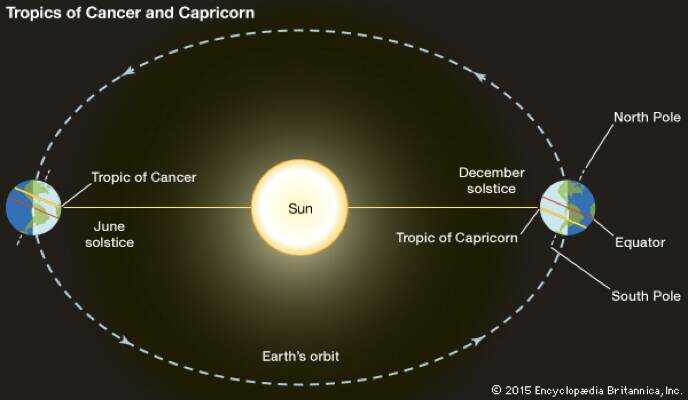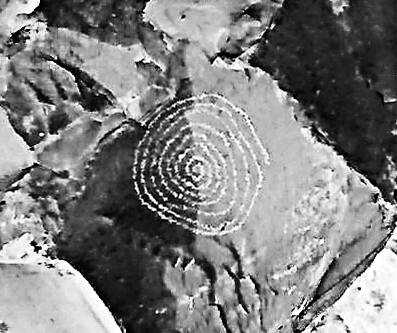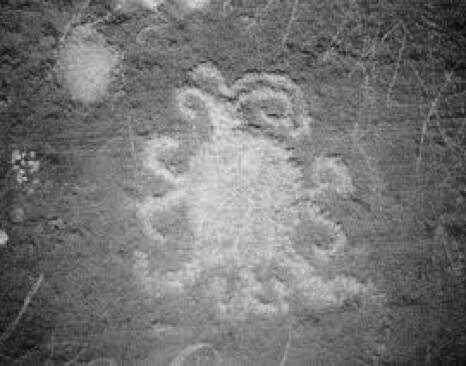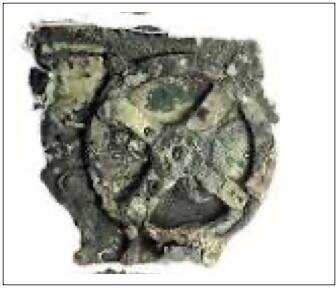2024 Eclipse Corner #6 – Archaeoastronomy

By Dan Slais
Archaeoastronomy is the scientific investigation of the processes and practices of ancient peoples relative to their knowledge of the heavenly cosmos. Many cultures have left signs or markings to show ideas for calendars and solstices, the longest and shortest amounts of Sun during the year. Both could be important to an agricultural society. The first day of summer, the summer solstice, the earth is tilted the maximum 23 ˝ degrees toward the sun, our longest day of sun exposure. At the winter solstice, the tilt is 23 ˝ degrees away from the Sun, our shortest Sun exposure. Summer solstice is June 20 and Winter solstice is Dec. 21.
Multiple civilizations world-wide had this understanding of the solstice but where is the evidence? Markers like Stonehenge are key to recognition to what was known. Finding sites with markers, cliff shadows, or petroglyphs (images cut into rock) to show an astronomical event such as a summer solstice might be difficult for a person to find or interpret. After these types of markers were realized at Chaco Canyon, 1977, in the southwest United States, many have been found in North America.

For example, this is a picture of an Anasazi marker in Petrified Forest National Park where a shadow of a rock crosses the petroglyph of the Sun at dawn on summer solstice each year. Another petroglyph at Puerco Pueblo is shown to the public near June 21. Robert Preston and his wife have found 76 calendar/solstice markers in Petrified Forest National Park.
Eclipses are awe-inspiring phenomena. It is no wonder that in many early cultures they were believed to be sacred, depicting fascinating mythology, or thought to be heavenly signs foretelling the future. Eclipse-lore to explain the disappearance of the Sun included ideas of the Sun being eaten, being stolen, and being a time of war and anger. Other cultures see it as a time to unite and settle differences. The ancient Chinese believed that solar eclipses occur when a legendary celestial dragon devours the Sun. It was tradition in ancient China to bang drums and pots and make loud noise during the eclipse to frighten the dragon away. The Inca thought a jaguar was attacking the Sun, the Pomo, an indigenous group from the Northwest US, thought it was a bear, in Vietnam a frog eats the Sun, the Vikings had sky-wolves, and the Korean culture had fire-dogs to attack the Sun. An interesting hypothesis at the Cahokia Mounds is that the solar eclipse allowed an opening to occur to God to reach earth.
Ancient markers showing solar eclipses have been identified as well. A famous petroglyph at Piedra del Sol in Chaco Canyon, New Mexico matches the total eclipse there on July 11, 1097 when Venus was seen during totality to the upper left and in a time with coronal mass ejections. The amazing part of archaeo-astronomy is that some cultures were thought to be able to calculate when the next lunar or solar eclipse would occur. Modern astronomy did not get to that point until 1600’s with the understanding of space design and advanced math.

The periodicity and reoccurrence of solar eclipses is governed by the Saros Cycle. Saros means to repeat. Natural harmony between the three lunar orbital periods and the alignment of the Sun is the key. Babylonians may have been the first, but with many other civilizations we’re able to see a repetition in the eclipse schedule at 18 yr, 11 da, 8 hr. This is the Saros Cycle. Our total eclipse on Monday, April 8, 2024 is part of Saros Cycle 139.
A device was found in 1900 by sponge divers in a Greek ship wreck off the coast of the island of Antikythera. The Antikythera device is thought to be an ancient analogue computer or orrery (which is a mechanical model of the solar system used to represent their relative positions and motions). The mechanical device was heavily corroded with inscriptions and ran on a complicated set of dials and more than 30 bronze gears. Some historical experts regard this as the world’s first computer, used to predict eclipses by the Saros formula. The Eclipse Corner will provide more astronomy as we get ready for the April 8, 2024 solar eclipse.
Dan Slais is a retired earth science teacher from Waynesville, Mo.. He has also taught college Astronomy for Drury and Columbia College.

